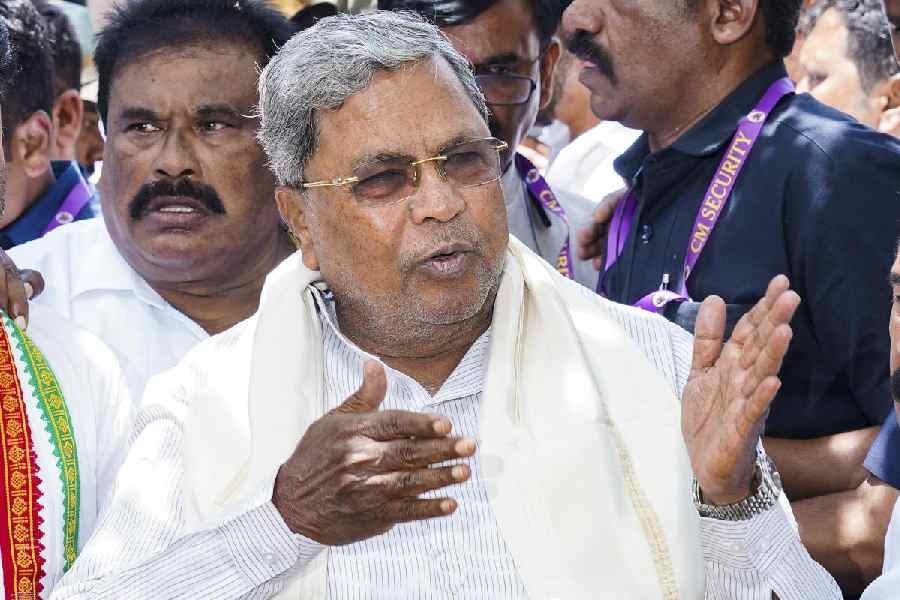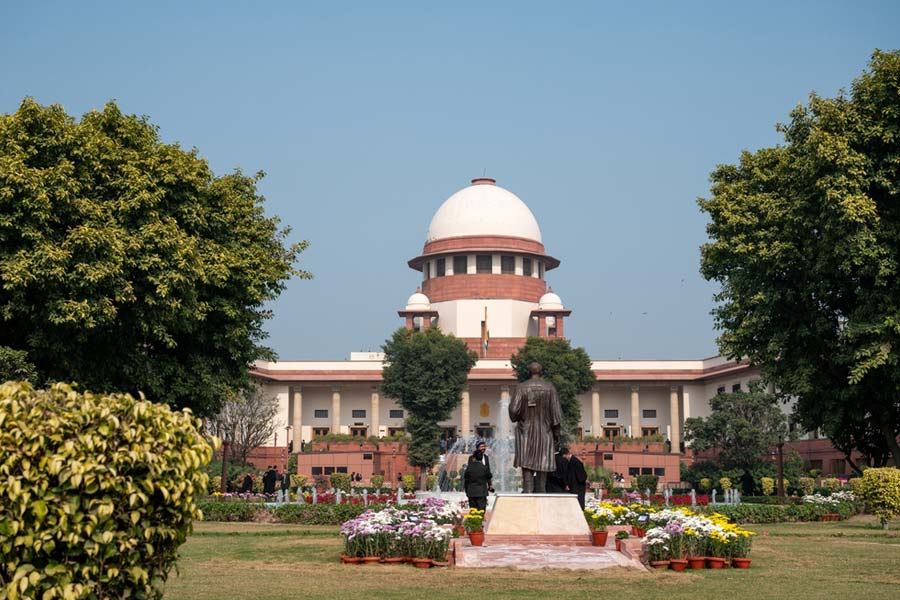 |
 |
 |
 |
During a visit to a Karnataka village last year, Benita Sharma met a group of women Panchayat members. They had a problem with the way village finances had been spent the previous year. The women wished to use the money on water, fuel, sanitation, education and health but the men wanted to build a community hall. In the end, the men had the final word. But soon the building became a club of sorts where men cracked loud jokes and played cards.
This year, the women told the UN Development Fund for Women (Unifem) programme officer, they were determined to have their own way but didn?t know how. For them, the budget was a maze they got lost in. But after a quick refresher course on how the money was to be spent under different heads and how to get access to it, the women were ready to fight for their money and channelise it in their priority areas. ?Now they are doing so with great skill,? says Sharma.
This was gender-budgeting in action at the grassroot level. And many women?s groups are hoping that when Union finance minister P. Chidambaram presents the annual budget on February 28, women?s priorities will be reflected in a similar manner.
Most perceive the budget as a gender-neutral document. The truth, however, is a little more complex. As British social scientist Diane Elson points out in her seminal work, Gender Budget Initiative: Background Papers, ?Budgetary policies can ignore gender-specific needs and have differential impacts on men and women because of the systemic differences between the sexes in relation to the economy.?
Elson argues that a gender-responsive budget aims at examining budgetary resource allocations through a gender lens. ?It is not a separate budget for women; rather it is an analysis of the government budget in order to establish its gender-specific impact and translate gender commitments into budgetary commitments,? she says.
In India, women?s groups have often accused the annual budget of being gender-blind. For a variety of reasons ? societal discrimination, biases of the implementing agency or misallocation ? women have been on the margins of every budget. Even when funds are available, as the Karnataka village example elucidates, patriarchy ensures that the status quo prevails. A gender audit of the Union budget 2003-04 showed that women-specific schemes and programmes made up about 1.76 per cent of the total allocation.
In this backdrop, the prevailing buzz of expectancy ? that the coming budget will be gender-sensitive ? has been prompted by a circular issued by the finance ministry in the last week of December 2004 which asked 18 ministries/departments including agriculture and home affairs, to establish a gender-budgeting cell by January 1, 2005. The circular added that these ministries must clearly bring out scheme-wise provisions and physical targets benefitting women in their annual reports for 2004-05 and prepare detailed demand for grants for 2005-06.
Though a general complaint is that the circular should have been issued much earlier than just two months before the budget, several ministries are on the job. The HRD ministry?s women and child development department has assigned three officers for the project. Even the ministry of agriculture has created a gender-budgeting cell and the work is being looked after by the farm women?s unit. Others like the urban employment and poverty alleviation ministry are in the process of setting up a unit.
| WHAT WOMEN WANT |
| • More funds for women’s education — from girlhood up • Special component plan for Dalit • Friendlier loans for women |
In this backdrop, every allocation made in the budget will be looked through a gender microscope. ?We are looking at something radical,? says Sharma of Unifem. ?After all, a gender-sensitive budget is not about gender only. It is about good governance, efficiency, transparency and accountability.?
The excitement is not restricted to women?s groups in the country. Speaking briefly on the phone from the University of Essex, where she teaches sociology, Diane Elson says those involved with gender-budgeting in Europe are also thrilled. ?There is a lot of excitement here on the Indian initiative on gender-budgeting.?
But amidst the euphoria, economist Bina Agarwal has a word of caution. She believes that any discussion on a gender-just budget needs to be done against the background of the larger macro-economic policies of the government. ?If your larger economic policies are not sensitive, there are limitations to what a budget can do.?
For several years now, women?s groups in India have been lobbying for a voice in the Union budget. Their contention is that various interest groups ? the farmers, the corporate sector, the labour unions, the traders ? lobby hard to wrench out a good deal for themselves. ?But there is no effort to consult women,? says Ranjana Kumari, director, Centre for Social Research.
To push their case, women?s groups had met Yashwant Sinha and Jaswant Singh during their finance minister days in the BJP-led NDA government. Activists recall that Sinha was quite receptive and Singh had asked them ?to e-mail their requirements?. Recalls Kumari, ?It was agreed during one of the meetings that a process will soon be formalised to consult women?s organisations before the budget.? Unfortunately, that didn?t happen.
However, the NDA government did initiate a gender review of the budget. Ashok Lahiri, then director of National Institute of Public Finance and Policy, was also involved with the project. Now that Lahiri is the chief economic adviser to the ministry of finance, women activists feel the time is just right for a gender-just budget.
Since the Congress-led UPA government came to power last year, the move towards a gender-sensitive budget has continued. During his 2004-05 budget speech, the finance minister had raised the need to look at ?budget data in a manner that highlighted gender sensitivities of budget allocation?. To this end, an expert group was formed. The circular, which has excited women?s groups, was issued following the recommendation of this group.
However, women?s groups have also complained that they haven?t been consulted even on the formation of the budget. ?Civil society organisations and women?s groups who have been pressing for a gender-just budget should have a greater say in its formation,? says Kumari, who is also co-ordinator for Joint Action Front for Women (Jafw), a forum for 60-odd NGOs working on gender issues.
In a letter to the finance minister, Jafw has offered its own wish list. Among its demands are budgetary increase for education targetting women and girl children, formulation of a special component plan for the Dalit and poor women, and gender-sensitive credit policies for women.
| SINGLE IN THE CITY |
| The unmarried career woman in urban India has come into her own. The budget should therefore take into account: • Tax benefits • Greater number of working women’s hostels • Health insurance scheme for elderly, single women • Easier bank loans • Property tax exemptions when buying houses |
Kumari feels that the budget should also take into account changes in urban India where the single woman has come into her own. ?A rising number of women are choosing to be single to pursue their career. So the government should give them tax benefits. There should be more allocations for working women?s hostels,? she says.
A health insurance scheme for elderly, single women is also on the wish list. So are bank loan privileges and property tax exemptions, when buying houses, for women. ?Most women do not inherit property. There should also be exemption for women when they register for inherited property,? the CSR director says.
The concept of gender-budgeting is novel to India. But in many countries across the world, it is already in practice, in greater or lesser degree. Australia was the first country to develop a gender-sensitive budget. In 1984, its Federal government published a detailed audit of the budget?s impact on women and girls. A paper prepared by CSR says 35 countries, including the United Kingdom, Canada, Tanzania and Sri Lanka, have taken steps to engender their national budget.
In India, gender perspective on public expenditure began to be talked about after the publication of the report of the Committee on the Status of Women in 1974. This was reflected in the Eighth Five -Year Plan (1992-97) and the Ninth Five-Year Plan (1997-2002). The latter said that at least 30 per cent of the funds will be earmarked for women-related sectors.
However, the Union government?s present initiative is a great leap forward. Says Sharma, ?No government has been more pro-active and more detailed. If the finance minister walks his talk in the budget, then India will have something to be proud of.?











